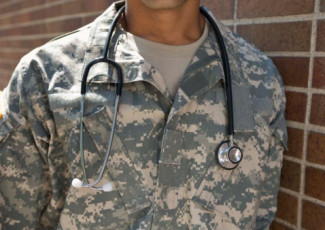Montana Aims to Create Highly Skilled Nursing Workforce
By Sonya Stinson
September 11, 2014
New grant program helps fill the need for skilled health care workers in the state’s most rural communities.
Communities across the United States are facing a shortage of skilled nurses. In Montana, where health care institutions and nursing schools amount to a smattering of dots across a predominantly rural landscape, filling those gaps is no easy proposition.
But with a new infusion of funding from the Robert Wood Johnson Foundation (RWJF), Montana’s nursing education leaders are tackling the problem with trailblazing resolve.
In August, RWJF’s Academic Progression in Nursing (APIN) program renewed a two-year, $300,000 grant for the Montana Office of Rural Health and the Area Health Education Center at the Montana State University College of Nursing Education. The center will use the money for a curriculum overhaul across all of the state’s nursing programs, including two at community colleges — Miles Community College (MCC) in Miles City and Flathead Valley Community College in Kalispell.
Cynthia Gustafson, executive director of the Montana Board of Nursing and co-lead of the Montana Action Coalition, says one aim of the initiative is to help graduates of community college nursing programs make the transition to a baccalaureate program.
“Our ultimate goal would be that anybody who enters…a two-year college can complete a baccalaureate degree within four years,” Gustafson says.
Montana State University, for example, already allows the transfer of credits from two-year nursing programs, and all of the courses have a common numbering system.
“Right now, if somebody enters into the state curriculum, the first year is general education, the second year is the LPN [Licensed Practical Nurse] year, and the third year is an RN [Registered Nurse] year,” Gustafson explains. The goal is to “streamline that even more.”
One possibility is to follow the approach used by states that feature dual enrollment between two-year and four-year institutions.
Still value in the two-year degree
While the American Association of Community Colleges has joined other national education groups in supporting academic progression for nurses, the association stands by its long-held position that the associate of science in nursing (ASN) degree is a key credential for entry into the profession.
Karla Lund, nursing program director at MCC, says ASN programs provide a solid background in nursing education and prepare students, if they so choose, to segue into bachelor’s programs. She counsels MCC students who are interested in pursuing their bachelor’s of science in nursing (BSN) to complete some of the requirements for the baccalaureate while enrolled at their local community college.
“We have a group of very dedicated nursing program directors who want nothing more than to see education continue for all of our nursing students,” Lund says. “We are well aware that on a national level they are not trying to get rid of two-year programs. I know there are people out there who would like nothing more, but it’s not going to happen. The nation needs us.”
Funding from Phase 1 of the APIN grant went toward performing assessments of Montana’s nursing-education programs and the employers who hire nurses, Gustafson says.
In the southeastern Montana frontier that is home to the MCC campus, the shortage of nurses who hold a BSN degree is dire. Many area nurses live on remote family ranches and farms that are hundreds of miles from the nearest college program.
Despite such challenges, participants at a statewide nursing education summit held in June renewed their commitment to the goal of having 80 percent of nurses educated at the BSN level by 2020.
“We are at close to 60 percent baccalaureate-prepared, and we see that our larger medical centers — and large for us is a 200-bed hospital — are able to offer incentives and are having hiring preferences for the baccalaureate,” Gustafson says. “They are not having as much of a problem recruiting baccalaureate nurses as the rural areas.”
Does your college service rural communities? What challenges have you encountered? Tell us in the Comments.











